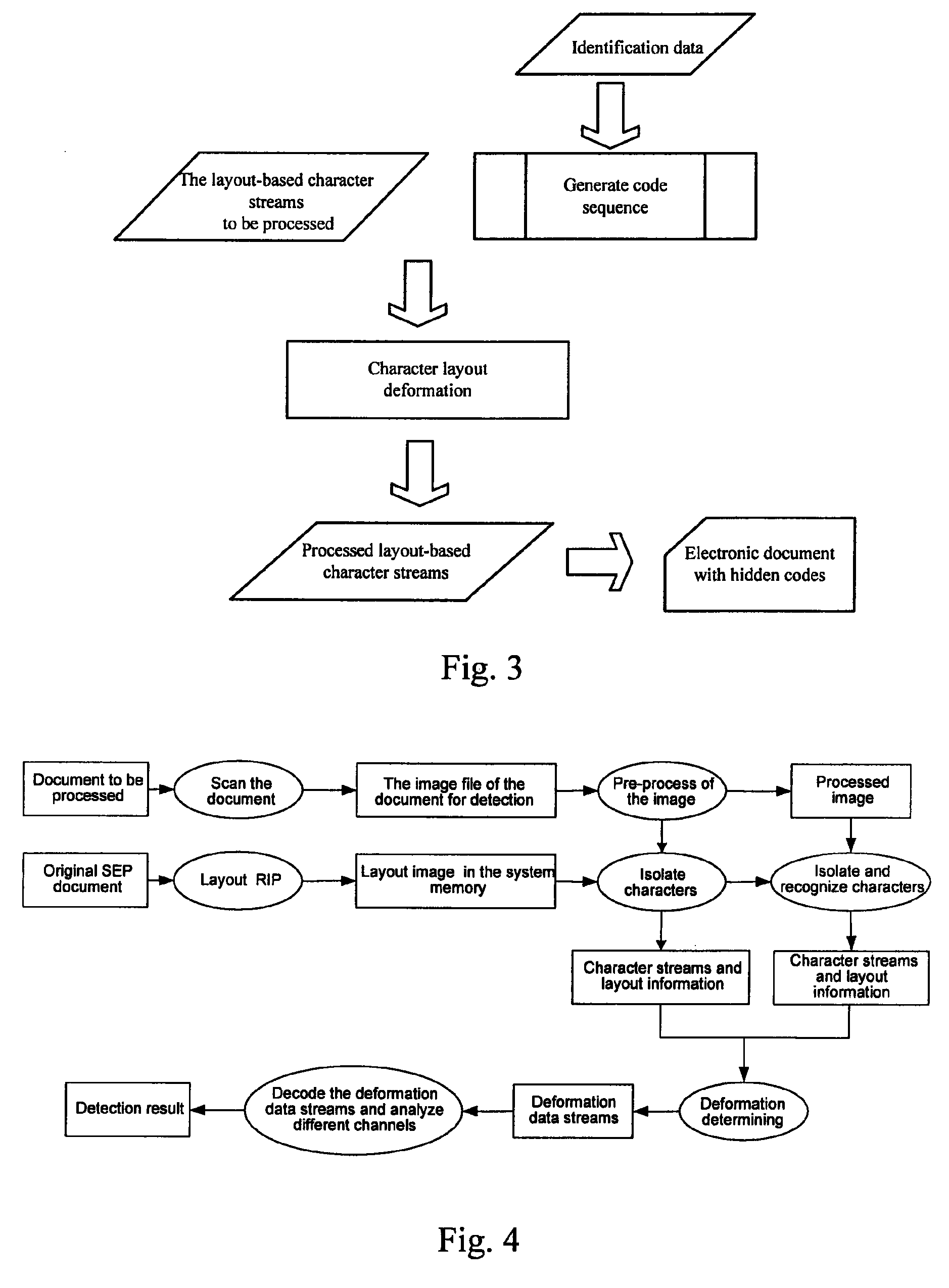Embedding and detecting hidden information
- Summary
- Abstract
- Description
- Claims
- Application Information
AI Technical Summary
Benefits of technology
Problems solved by technology
Method used
Image
Examples
Embodiment Construction
[0039]A detailed description of the embodiments is illustrated by way of example and not by way of limitation in the figures of the accompanying drawings in which like references indicate similar elements. It should be noted that references to “an” or “one” or “some” embodiment(s) in this disclosure are not necessarily to the same embodiment, and such references mean at least one.
[0040]A number of concepts employed by the application are explained herein so that a detailed description of the embodiments of the application can be better understood.
[0041]Layout-based file: a type of file that decides the printing and display of page elements by describing the visual appearance, including positions, sizes, and shapes of visible elements (characters, figures, and images) in a document. Compared with content-based files, e.g., WORD documents, printing plates, PPT documents, Excel documents, and AutoCAD documents, the layout-based files are simpler since only layout information is recorde...
PUM
 Login to View More
Login to View More Abstract
Description
Claims
Application Information
 Login to View More
Login to View More - R&D
- Intellectual Property
- Life Sciences
- Materials
- Tech Scout
- Unparalleled Data Quality
- Higher Quality Content
- 60% Fewer Hallucinations
Browse by: Latest US Patents, China's latest patents, Technical Efficacy Thesaurus, Application Domain, Technology Topic, Popular Technical Reports.
© 2025 PatSnap. All rights reserved.Legal|Privacy policy|Modern Slavery Act Transparency Statement|Sitemap|About US| Contact US: help@patsnap.com



